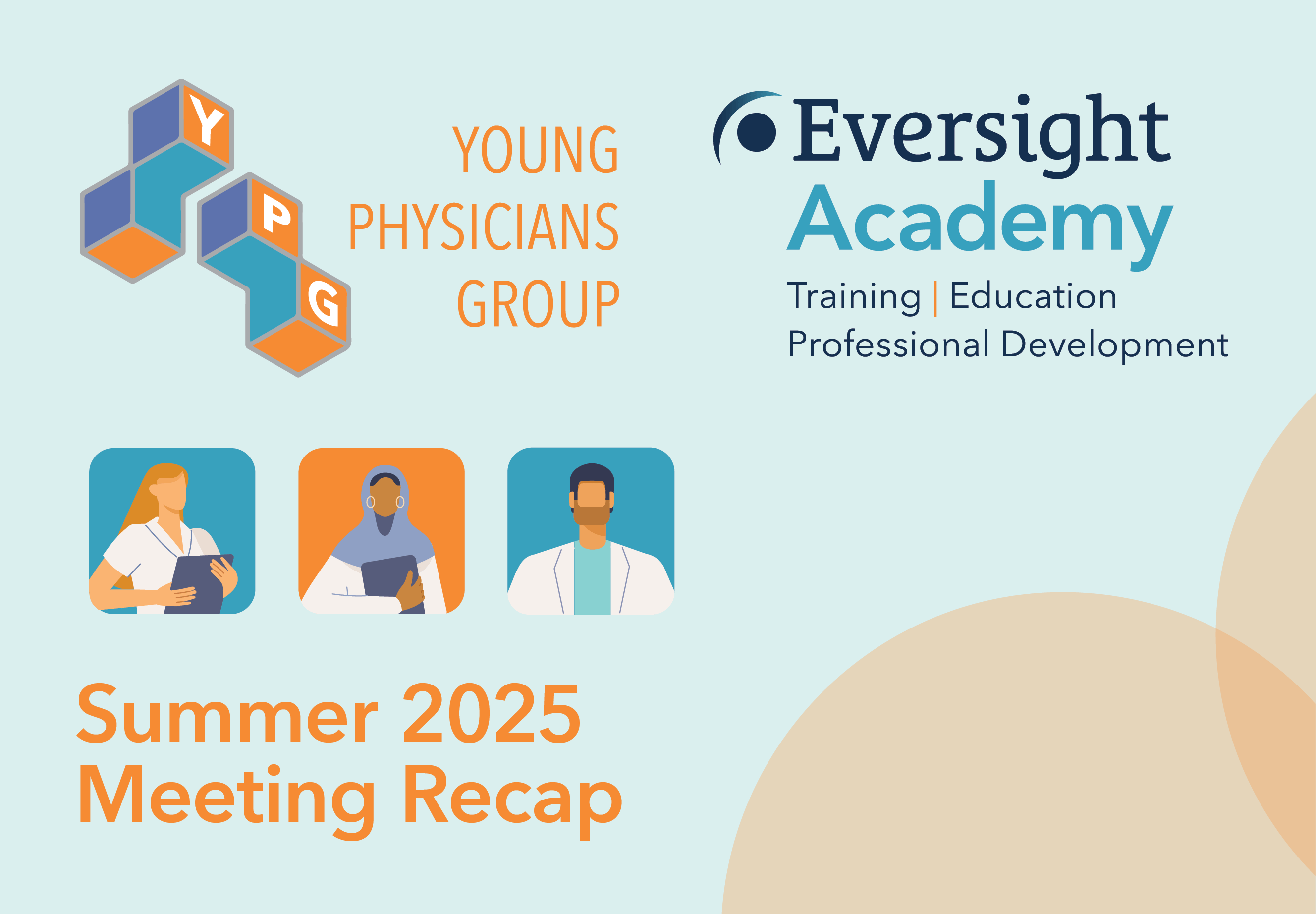Aug 1, 2025 — Ebony Johnson, Senior Partner Relations Director
On July 24, 2025, the Young Physicians Group (YPG) convened virtually for a dynamic session on cutting-edge treatments for limbal stem cell deficiency and ocular surface rehabilitation. Elliot Crane, MD moderated, welcoming two expert presenters and convening an engaged discussion with attendees from across the country.
Disclaimer: Medical information is not medical advice—read our disclaimer.
Session overview
The meeting featured two in-depth presentations:
- Using BrightMEM™ anterior keratoplasty for ocular surface rehabilitation, by Kamran M. Riaz, MD
- KLAL-Pro processed limbal allografts for limbal stem cell deficiency, by Pauline Dmitriev, MD
After each talk, presenters shared surgical videos, clinical outcomes and pearls for refining technique. The floor then opened for case presentations, questions and peer-to-peer troubleshooting on topics ranging from infection management to emerging therapies for neurotrophic keratitis.
Using BrightMEM™
Dr. Riaz, Clinical Professor, Vice Chair for Clinical Research and the Thelma Gaylord Endowed Chair in Ophthalmology at Dean McGee Eye Institute at the University of Oklahoma, introduced Descemet’s membrane anterior keratoplasty (DMAK) as a middle ground between conventional amniotic membrane transplant (AMT) and full keratoplasty. Key points included:
- Indication & mechanism
- Ideal for partial or full limbal stem cell deficiency without need for systemic immunosuppression
- Decellularized Descemet’s membrane shares proteins with limbal niche to support epithelial expansion
- Surgical technique refinements
- Ensure thorough epithelial removal and vessel control with cautery or topical epinephrine
- Dry ocular surface meticulously (3–5 minutes) before graft placement
- Use suture fixation in high-risk cases (e.g., aniridia, nystagmus, poor compliance)
- Case highlights
- Traumatic limbal deficiency: two-line gain to 20/30 and successful scleral lens fitting at one month
- Complex cataract with aniridia: combination of DMAK, glue and three safety sutures improved epithelium and vision to CF→24
- Clinical pearls
- Smaller grafts (7–7.5 mm) maximize centration and adherence
- DMAK is fragile—unlearn DMEK handling, adopt gentle forceps techniques
- Consider suturing in patients who may rub, have flat curvature or neurotrophic surface
KLAL-Pro processed limbal allografts
Dr. Dimitriv of Kellogg Eye Center described KLAL-Pro, eye bank-processed keratolimbal allograft lenticules that streamline surgery and expand access to high-quality tissue. Highlights included:
- Rationale for processed tissue
- Reduces intraoperative preparation time and variability
- Preserves stem cell viability and palisades of Vogt, confirmed by OCT and histology
- Immunosuppression strategies
- Pre-op tacrolimus and mycophenolate mofetil, perioperative steroids, antibiotic drops under rheumatologist oversight
- Protocols adapted from the Cincinnati regimen, tailored by comorbidities
- Three illustrative cases
- Thermal injury unilateral limbal stem cell deficiency (LSCD): complete epithelialization and 20/60 uncorrected distant visual acuity (UCDVA) at one year with no rejection
- Firework injury: temporal graft rejection managed with intravenous immunoglobulin (IVIG) therapy, resulting in 20/50 best corrected visual acuity (VA) at eight months
- Bilateral vitamin A deficiency: standalone KLAL-Pro achieved 90% epithelium by three weeks, plan for future penetrating keratoplasty (PKP)
- Future directions
- Defining immunosuppression duration in combined vs. standalone procedures
- Prospective comparisons with AMT, DMAK and traditional lr-CLAL/CLAU techniques
Peer discussion & case troubleshooting
Attendees contributed challenging cases and sought input on:
- Nocardia keratitis post-PK: compounded antibiotic access, oral vs. topical agents and excision timing
- Insulin and losartan drops for neurotrophic keratitis: dosing regimens, compounding logistics and clinical response timelines
- Oxybuprocaine and amniotic membrane sequence to optimize epithelial healing
- Strategies for managing stromal neovascularization and traumatic surface disease prior to advanced grafting
Key takeaways
- BrightMEM™ grafts offer an immune-privileged scaffold for moderate LSCD, with suturing as a valuable adjunct in select patients
- Processed limbal allografts (KLAL-Pro) reduce operating room time and standardize tissue quality, but require robust immunosuppression protocols
- Meticulous ocular surface preparation—drying, vessel control and epithelial clearance—is critical for graft adherence and epithelialization
- Multidisciplinary collaboration (rheumatology, compounding pharmacy) enhances patient outcomes in complex cases
Thank you to our guest presenters Drs. Riaz and Dimitriv, to Drs. Crane and Newman for their mentorship, and to all participants whose insights make these meetings invaluable.
What's next?
Mark your calendar for the final YPG meeting of the year: November 13.
Share your interesting cases or questions in advance with Ebony Johnson—we look forward to another interactive session.
Interested in receiving periodic news and updates from Eversight? We invite you to sign up to receive our emails.

